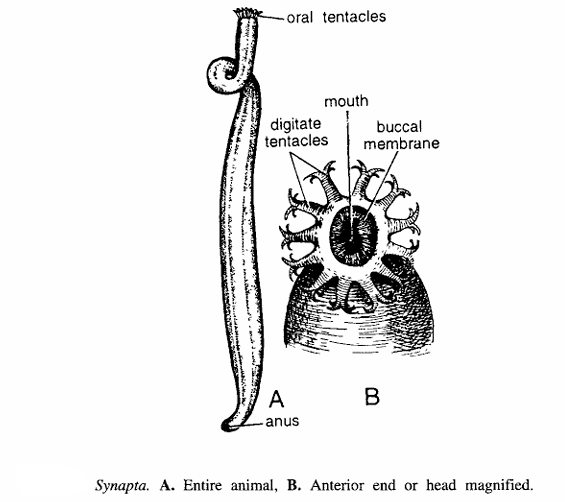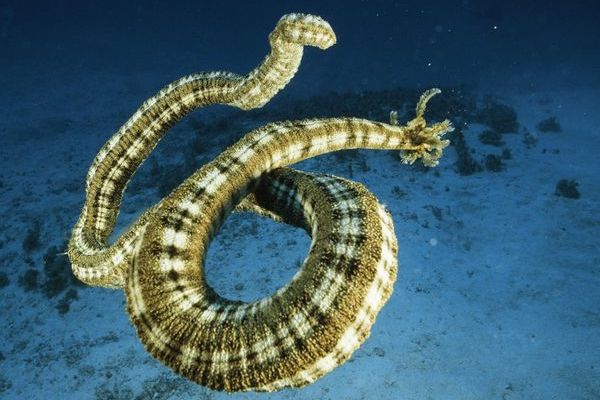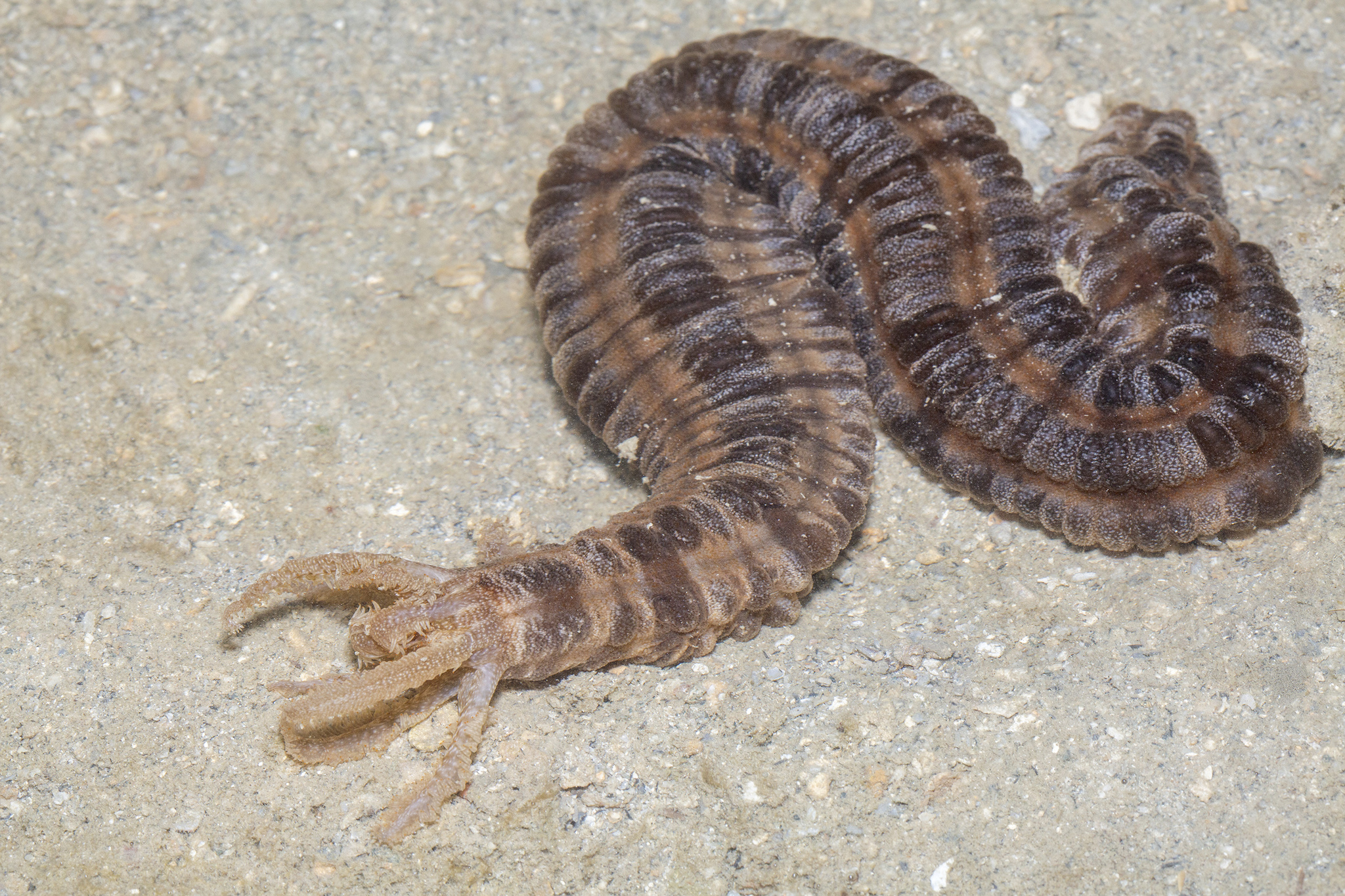Introduction
Synapta, a remarkable genus within the class Holothuroidea, represents some of the most distinctive and ecologically significant sea cucumbers found in tropical marine environments. This article provides an in-depth, SEO-optimized and plagiarism-free overview of Synapta, covering its introduction, classification, habitat and habits, geographical distribution, general and special characteristics, unique identification features, and more, with a comprehensive list of references at the end.
This is a genus of elongated sea cucumbers (phylum Echinodermata, class Holothuroidea) including the well-known Synapta maculata, commonly called the “snake sea cucumber.” Members of this genus are among the longest sea cucumbers in the world, sometimes extending over 3 meters in length. Their slender, worm-like bodies and extraordinary adaptability have made them subjects of interest in marine biology and ecology. In marine habitats, Synapta plays a crucial role in sediment mixing and nutrient recycling, contributing to the health and productivity of ocean floor ecosystems.
Classification of Synapta
Below is the taxonomic placement of Synapta, each with a succinct characteristic:
| Taxonomic Level | Name | Characteristic |
|---|---|---|
| Kingdom | Animalia | Multicellular, heterotrophic, eukaryotic |
| Phylum | Echinodermata | Marine organisms, pentamerous radial symmetry as adults |
| Class | Holothuroidea | Leathery, elongated body; tube feet present or absent |
| Order | Apodida | Tube feet absent, vermiform body, lack of respiratory trees |
| Family | Synaptidae | Elongated, soft, and thin body, no tube feet, delicate skin |
| Genus | Synapta | Exceptionally long, slender, worm-like appearance |
| Species | S. maculata (for example) | Largest in length among sea cucumbers |

Habitat and Habit
This species primarily occupy shallow coastal waters of the tropical Indo-Pacific, preferring sandy and muddy seabeds, seagrass meadows, and rubble zones near coral reefs. Their habitats offer abundant organic debris, crucial for their feeding strategy. Synapta maculata, a common representative, can be found burying itself under rubble or hiding among seagrasses, often at depths up to 20 meters. Unlike many echinoderms that use tube feet for movement, Synapta attaches to and moves along substrates using tiny hook-like sclerites that protrude from its soft body. This form of locomotion allows efficient burrowing and aids in camouflage among seagrass and sediment.
As a deposit feeder, They spends much of its time sifting through sediments using its tentacles, collecting detritus, plankton, and organic particles for nutrition. This activity not only supports its own growth but also contributes significantly to the process of bioturbation—the mixing and aeration of seabed sediments—helping promote nutrient cycling in marine environments.
Geographical Distribution
The distribution of Synapta is broad, spanning the warm waters of the Indo-Pacific—from East Africa to the central Pacific islands, including the Philippines, Indonesia, northern Australia, the Great Barrier Reef, and the coasts of Southeast Asia. Local abundance is highest on protected reef flats and seagrass beds, where they may occur singly or in small clusters. Their well-camouflaged appearance and cryptic behaviors often make them difficult to spot, except where population densities are locally high.

General Characteristics
- Synapta is a whitish elongated, worm-like, semitransparent and burrowing holothuroid. Size few to 60 cm.
- Mouth and anus are found at opposite ends.
- Mouth is enclosed by buccal membrane. Mouth opening is surrounded by 10 to 25 small bipinnate oral tentacles.
- Tentacles capture large and small zoophytes.
- Tube feet, respiratory tree, ossicles and cuverian tubules are absent.
- Longitudinal muscle bands are distinctly seen through transparent body.
- Some peculiar anchor plates are found in the thin body wall.
- When irritated, the animal show autotomy i.e., breaks into two or more pieces, which regenerate into new individuals. Special features : Thyone is famous for its power of autotomy and regeneration.
- When irritated, the bodywall ruptures and organs are eviscerated (ejected out).
- The animal regenerates the missing part.
- Body Form: Synapta sea cucumbers possess a soft, highly elongated, and flexible body, allowing extension or contraction as needed. The coloration ranges from pale yellow to brown, with patterns such as longitudinal stripes or patches, helping them blend effectively with the surrounding sand, rocks, or seagrass.
- Tentacles: Their mouthparts are surrounded by 15 feather-like, pinnate tentacles, which are constantly in motion. Tentacles are equipped with sticky surfaces to trap and collect detritus, plankton, and organic particles from sand and over surfaces.
- Locomotion: Lacking tube feet, Synapta moves with the help of anchored ossicles—microscopic, calcareous spike-like structures—that anchor them to sediments or submerged objects. These ossicles can be adhesive, making sea cucumbers difficult to dislodge.
- Physiology: Unlike many holothurians, Synapta species lack a complex respiratory tree and instead rely on cutaneous respiration (gas exchange through the skin). The thin body wall ensures efficient oxygen uptake, suited to their mostly sedentary lifestyle.
- Fragility: The body is more delicate and prone to damage compared to other sea cucumbers; hence, handling these animals can easily injure them.
Special Features
One of the most notable special features, particularly Synapta maculata, is its impressive length—sometimes reported at over 3 meters—and extreme flexibility. The species also exhibits a unique defensive mechanism called autotomy. When threatened, Synapta can shed or break off sections of its body, a process believed to distract predators and facilitate escape. These lost body parts can regenerate—an adaptation that is both remarkable and uncommon among holothurians.
Additionally, the tentacles and occasionally the body wall of Synapta may contain noxious substances. These toxins deter fish and other predators, allowing the sea cucumber to feed almost continuously without frequent retraction of feeding structures. Biochemical studies have identified triterpene glycosides in Synapta maculata, one of which has shown moderate anti-tumor activity in laboratory settings.

Identification
Synapta is readily identified by:
- Its elongated, snake-like, and body length (sometimes exceeding 3 meters in mature specimens).
- The absence of tube feet—differentiating it from many other sea cucumbers.
- The presence of small, anchor-shaped ossicles embedded in the skin, visible under a microscope.
- A mouth encircled by 15 slender, fringed tentacles.
- Its coloration, often marked by longitudinal stripes or discrete dark patches, helps to distinguish Synapta from similarly slender marine organisms like marine worms.
Ecological Importance
By ingesting and processing large quantities of sediment, Synapta plays a vital ecological role, helping to keep the seabed clean and fertile by recycling nutrients. Its burrowing and surface-feeding activity promote oxygenation and the turnover of organic matter, supporting the health of entire benthic communities. Synapta’s abundance in certain seagrass meadows and reef flats serves as a bioindicator of sediment quality and marine ecosystem health.
Human Interactions
Although not as commercially significant as other sea cucumbers, Synapta species are occasionally harvested by local populations for use as food or bait. However, due to their delicate nature and ecological importance, care must be taken not to disturb natural populations. Their role in bioturbation makes them vital contributors to healthy, resilient seagrass and reef systems.
Conclusion
In summary, Synapta stands out among the world’s sea cucumbers for its extraordinary form, adaptability, and ecological contributions. From its delicate, anchor-adorned skin to its impressive regenerative abilities, Synapta is a model example of the evolutionary ingenuity of echinoderms in marine environments. Enhanced understanding and protection of Synapta and its habitat are essential for safeguarding the vitality and balance of tropical marine ecosystems.
References
- https://en.wikipedia.org/wiki/Synapta_maculata
- https://www.sealifebase.se/summary/Synapta-maculata.html
- http://www.wildsingapore.com/wildfacts/echinodermata/holothuroidea/synaptid.htm
- https://www.nationalgeographic.com/animals/invertebrates/facts/sea-cucumbers
- https://en.wikipedia.org/wiki/Sea_cucumber
- https://www.tetiaroasociety.org/biosphere-tetiaroa/sea-cucumbers
- https://www.nagaofoundation.or.jp/documents/Field-guide_2023_JBJontila.pdf
